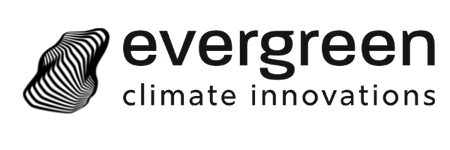Clean energy and clean vehicle jobs in Minnesota set a record in 2023, growing to more than 62,000 jobs – a four percent increase over the previous year. Following federal climate investments passed in 2022 and a statewide 100% carbon-free electricity standard passed in 2023, the industry is poised for continued growth.
Quick Facts
Clean energy and clean vehicle companies employ 62,102 Minnesotans, topping the pre-COVID-19 record of 61,637 set in 2019. Jobs increased 4.0 percent (+2,415) in 2023. Clean energy’s economic role in the region is vital: the industry added jobs almost five times faster than Minnesota’s overall economy, and nearly four times as many Minnesotans work in clean energy than the number of lawyers, web developers, and real estate agents combined. Job growth is expected to surge in 2024 (+6 percent). However, if federal clean energy and clean vehicle incentives are rolled back, the job growth and resurgence of clean energy manufacturing could be at risk.
Clean Energy Jobs in Minnesota

Energy efficiency comprises over two-thirds of Minnesota’s clean energy jobs. These 44,511 Minnesotans spend their workdays doing things like manufacturing ENERGY STAR-rated appliances; installing efficient lighting; connecting heat pumps and other highly efficient heating, ventilation, and air conditioning systems; and constructing homes and commercial buildings using advanced materials like low-carbon concrete.
Despite slower-than-expected electric vehicle adoption nationally, Minnesotans working in the clean vehicle sector, including electric vehicles (EVs), hybrid EVs, plug-in hybrids, and hydrogen and fuel cell vehicles, still registered a 13-percent year-over-year spike, adding 555 new jobs for 4,761 workers. Within the clean vehicle sector, EV jobs had the steepest growth rate at +14.4 percent.
Renewable energy job growth in solar (+4.1 percent) and wind (+3.7 percent) continued across Minnesota with smaller growth in grid & storage sector jobs, driven by emerging subsectors like battery storage (+2.7 percent) and smart grid modernization (+7.7 percent).
Jobs by Sector

Policies Matter
Whether it’s a $7,500 tax credit to purchase a new EV or a manufacturing tax credit that spurs a business to develop their domestic electrolyzer production, federal policies like the Inflation Reduction Act (IRA) are enabling an American business revolution. As Minnesota works to achieve its 100% carbon-free electricity standard while growing a skilled and equitable clean energy workforce, policymakers should:
- Defend federal clean energy and clean vehicle investments: Since the IRA passed in August 2022, more than 85 large-scale clean energy projects have been announced across the Midwest, according to E2’s Clean Economy Works analysis. That’s more than a quarter of all projects announced nationwide. These projects are expected to spur $31.2 billion in private-sector investments and create more than 87,000 Midwestern jobs – with the vast majority of these projects being in rural or semi-rural areas.
- Develop and fund federal and state workforce development programs: One of the biggest challenges to expanding clean energy job opportunities is filling open positions. Workforce training will be critical to continued industry growth, with over 81 percent of clean energy employers in Minnesota reporting at least some difficulty hiring workers. The Minnesota Energy Alley initiative is aimed at ensuring Minnesota’s competitive position as the home for the next generation of clean energy entrepreneurs and startups bringing jobs, talent, and investment to the state.
- Invest in transmission and permitting reform: Federal and state governments must work with Midwestern transmission organizations to ensure wind, solar, and energy storage projects are able to connect to the grid and move clean, renewable power throughout the region. Minnesota recently passed permitting reform for clean energy and transmission projects into law and now it is time for the federal government to follow suit.
- Advance state-level clean energy policies: Minnesota has showcased its leadership in the clean energy transition over the last few years, from increasing consumer rebate programs and modernizing commercial and residential building codes to creating the Minnesota Climate Innovation Finance Authority. The state can build on this significant progress by supporting the implementation of efficient and resilient transmission, accelerating decarbonization in the transportation and building sectors, remaining competitive for clean energy manufacturers and advancing its balanced approach to the safe and responsible mining of key minerals used in the clean energy transition.
Subsector Details

Value Chain
Across all clean energy sectors, most Minnesota clean energy jobs were in construction and manufacturing.

Job Highlights
Learn even more about clean energy jobs in Minnesota.
More Jobs DataUnless otherwise stated, data and analyses presented in this report by Evergreen Climate Innovations and E2 (Environmental Entrepreneurs) are based on data collected for the 2024 U.S. Energy Employment Report, produced by the U.S. Dept. of Energy and collected and analyzed by BW Research Partnership.



